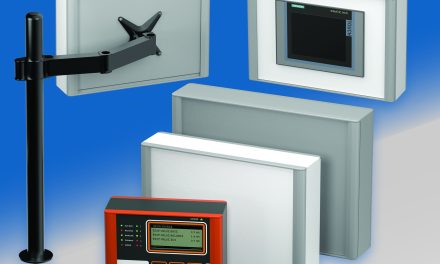 Sue Wright at Schneider Electric advises on some of the latest innovations in busbar trunking and how these solutions are simplifying installation of electrical equipment incentivising by cost and performance
Sue Wright at Schneider Electric advises on some of the latest innovations in busbar trunking and how these solutions are simplifying installation of electrical equipment incentivising by cost and performance
The product criteria for the modern installer is dual-fold; amid a culture of constant budget constraints and heightened competition, it is more important than ever to maintain the highest installation performance within the lowest possible cost margin.
Of course, one way to reduce the cost of labour is by specifying products, which are quick and easy to install, thereby reducing the risk of complications and ensuring the project is kept on track. This requires a holistic, acute approach. While once it was common for specifiers to give measured consideration to the larger items of the specification process, today it is just as important to ensure the quality of the smaller-scale products. In many cases, these can have just a much impact on the safety and durability of the electrical installation.
This can be clearly demonstrated by looking at the cable management arena, which has come a long way throughout recent years. While previously aluminium and steel remained the dominant options for more arduous environments, favoured for being robust, strong and cost-effective, there is a fast emerging new product of choice – busbar trunking.
Of course, busbar trunking is not a new product; it has been around for more than 50 years. However, historically the high cost of busbar has been a stumbling block.
But, this is all set to change. As busbar trunking has developed, the installation time has lessened with the advent of timesaving prefabricated options, which, with a number of integrated innovative features, can work to eliminate cabling errors. In this way, it is estimated that the use of modern busbar significantly lowers labour costs across the complete building.
Given that time naturally translates into money for the busy installer, this means drastically reduced cost; it is therefore a case of spending to save.
Of course, busbar has many other inherent benefits. Conceived as an alternative to conventional methods of electrical distribution, busbar trunking is built as a distribution system, which uses cable and cable mounting systems.
With an outer metallic casing which contains either copper or aluminium conductors, it is supplied in fixed lengths which can be quickly and easily joined together, using joint kits supplied by the manufacturer. The result is improved flexibility, allowing the user to install a feeder without disruption.
Flexibility is also a factor. Once installed, busbar trunking can be amended if the business changes its layout or increases its power rating. The electrical installation can easily be upgraded as part of future investment projects and it’s possible to add or remove loads without cutting off power to the rest of the installation. This is particularly pertinent in industrial and commercial environments, which are subject to constant change.
Busbar plays an imperative part in improving energy efficiency by reducing power loss in an electrical installation while lowering emissions; helping to significantly improve a building’s green credentials.
Better still, the use of busbar trunking means no waste or scrap, in contrast to cable. However, the major environmental advantage is that this technology can easily be recycled and reused.
Busbar is the ‘buzz’ product
One emerging busbar product, which combines speed, safety and durability is a product called the Canalis KDP, developed by Schneider Electric. This solution offers a flexible and compact design and is said to be easy to fit in a suspended ceiling or raised floor, while access points are available wherever they are required. Another benefit is the fact a specific connector for lighting control is available that eliminates cabling errors and is said to save up to an hour assembly time per control point as well as making the installation upgradeable.
More so, the fixing can be adapted to building structure and clipped onto a wire basket, cable tray or concrete beams. The result is significantly improved efficiency and reduced labour time costs.
The device can therefore be installed in all types of buildings including partitioned offices, cruise liners and farms.
As we all know, times are changing and at a rapid pace. Thus, specifiers cannot afford to use the same tried and tested electrical equipment but must rather stay on the pulse of emerging trends and take advantage of the latest technologies which can save them time and, in turn, money. In this way, they can take a new path to greater heightened efficiency.
Schneider Electric


